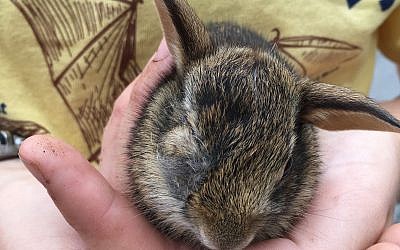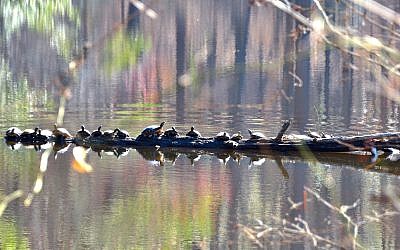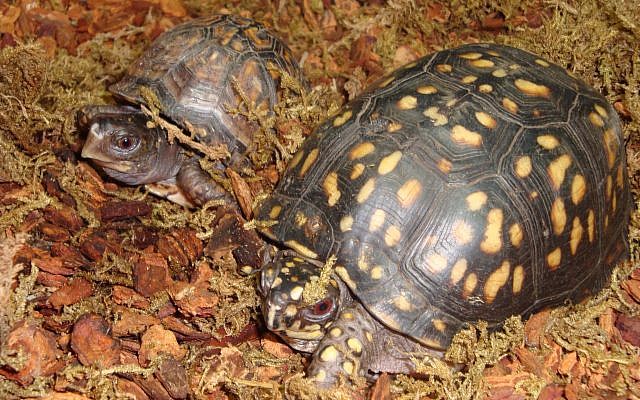What To Do When you Find Injured Wildlife
If you find an injured baby animal or other wildlife, here are some suggestions of what to do.
Warm weather, summer vacation and outdoor adventures often lead to more calls to the Chattahoochee Nature Center’s wildlife department about injured baby animals.
The CNC is licensed and trained only for reptiles, amphibians and raptors such as hawks, owls, vultures and eagles. Still, around this time of year, the CNC responds to more than 150 requests a month about wildlife babies.
Part of the reason for the increase in calls is because the animals are living longer and there’s no hard freeze to keep them at bay, said CNC Wildlife Director Kathryn Dudeck. “In February, we had temperatures in the 60s.” Without a hard winter, reptiles and other wildlife came out earlier to breed, she said.
Residents should be especially alert from dusk to dawn, when wildlife come out to enjoy the cooler temperatures.
If you find an injured baby animal or other wildlife on your walks in the woods or in your yard, Dudeck offers these suggestions:
Baby Rabbits
Rabbit’s nests are simply shallow depressions in the ground with dried grasses and rabbit fur lining. Mother rabbits don’t sleep with their young. Instead, they visit them once a day and once a night to nurse, and then cover them back up. If you have accidentally uncovered one, simply put grass clippings back over the nest, and place a tic-tac-toe pattern of yarn over the area. If the yarn is disturbed the next day, the mother has returned and all is well. If it is still in place, contact a licensed small mammal rehabilitator through the Georgia Department of Natural Resources (DNR).
There is a simple way to keep baby rabbits safe if your pet uncovers the nest. Mother rabbits only enter nests from one side and exit the other. Place a large box, such as what might hold printer paper, upside down over the nest. Make sure to cut out the short sides so that the mother has a clear path in and out. Place bricks or rocks on the box to keep your pet from disturbing it. Please note that mother rabbits do not have “bunny radar” and are unable to locate their nest if it is moved.
A baby rabbit whose eyes are open and ears are fully standing up is old enough to be on its own.

Baby Turtles And Snakes
In this part of Georgia, turtles and other reptiles, including snakes, have no parental care. This means that from the moment they hatch from the egg or are born, they are totally self-sufficient. Keep in mind that aquatic turtles nest away from water, so you may encounter hatchling sliders, cooters, and snapping turtles on land. Their instinct is to travel downhill to water once they emerge from the nest. You can gently pick up the turtles and carry them to the edge of a creek or pond if their journey requires crossing busy roads.

Baby Birds
The first question we ask is: “Is it naked, covered in fluff, or does it have fluff, feathers, and a stumpy tail?” What needs to be done, if anything, depends on the answer. If the baby is naked or covered in fluff, it should not yet be out of the nest. If possible, place the baby back into the original nest, ensuring to look on the ground, in low shrubs, and tree branches, since some species only nest 3 to 4 feet off the ground and others actually nest on the ground. If you cannot find the nest, place dried grass and leaf litter in a small basket and place or hang it in the closest tree. The parent cannot pick up the baby, but will tend to it in the surrogate nest.
If the bird is partially feathered and has a stumpy tail, it is a fledgling and is supposed to be on the ground. This is the critical time it is building flight muscles and learning from its parents what to eat and how to hide. If the bird has wandered into a roadway, gently pick it up and place it under some nearby bushes. It will start calling once you leave and the parents will relocate it. It’s an old wives’ tale that the mother won’t return to her young if they’re touched by humans. The myth of leaving a human scent started when people tried to put fledglings back in the nest and they jumped out or were pushed out by the parents so that they could continue teaching them.
Baby Squirrels
By far, the wildlife department receives the most phone calls this time of year about baby squirrels. Eastern gray squirrels have two peak breeding seasons in the South. Mother squirrels can have eight to nine babies in each litter and place two to three babies in each nest they build. The mother visits the nests in the same order several times a day to care for the young. If one of the nests is falling apart or getting cramped, she carries the babies in her mouth one at a time down the tree and leaves them on the ground. She will then carry them, again one at a time, up to one of the other nests. If you find a baby squirrel on the ground – the only rodent in Georgia with black toenails – gently place it in a box with some leaves and grass clippings and leave the box on the ground. If neighborhood pets are a concern, you can wedge the box in a nearby tree or shrub. Give the mother four hours to retrieve the baby. If she has not returned by then, call a licensed small mammal rehabber at the DNR. But note that the mother will not retrieve the baby at night.
In addition to DNR, you can visit Animal Help Now, which has a phone app for locating rehabbers by GPS location. For more information, contact the CDC wildlife department at 770-992-2055, extension 239.




comments